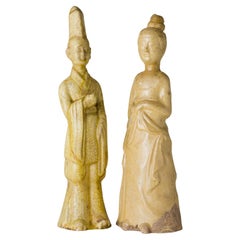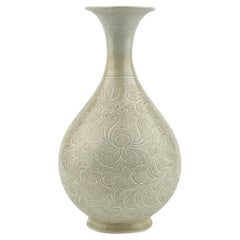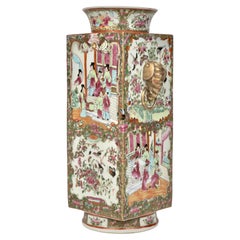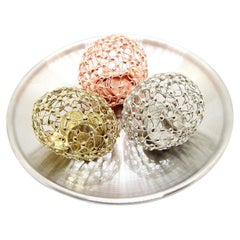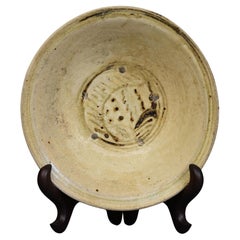Asia - Asian Art and Furniture
15th Century and Earlier Hong Kong Tang Antique Asia - Asian Art and Furniture
Pottery, Straw
Early 1900s Chinese Qing Antique Asia - Asian Art and Furniture
Wood, Elm
15th Century and Earlier Hong Kong Antique Asia - Asian Art and Furniture
Ceramic, Porcelain
19th Century Hong Kong Qing Antique Asia - Asian Art and Furniture
Ceramic, Porcelain
21st Century and Contemporary Thai Arts and Crafts Asia - Asian Art and Furniture
Steel
15th Century and Earlier Thai Antique Asia - Asian Art and Furniture
Ceramic
Early 1900s Japanese Meiji Antique Asia - Asian Art and Furniture
Gold
21st Century and Contemporary Chinese Organic Modern Asia - Asian Art and Furniture
Wood, Elm
Early 20th Century Japanese Asia - Asian Art and Furniture
Cotton
15th Century and Earlier Cambodian Antique Asia - Asian Art and Furniture
Bronze
20th Century Southeast Asian Other Asia - Asian Art and Furniture
Wood
20th Century Japanese Asia - Asian Art and Furniture
Paper
21st Century and Contemporary Chinese Organic Modern Asia - Asian Art and Furniture
Wood, Elm
Early 20th Century Meiji Asia - Asian Art and Furniture
Wood
2010s Chinese Asia - Asian Art and Furniture
Bronze
Late 19th Century Japanese Edo Antique Asia - Asian Art and Furniture
Wood
16th Century Vietnamese Ming Antique Asia - Asian Art and Furniture
Ceramic
Early 17th Century Japanese Edo Antique Asia - Asian Art and Furniture
Porcelain
Mid-20th Century Japanese Showa Asia - Asian Art and Furniture
Tin
21st Century and Contemporary Chinese Asia - Asian Art and Furniture
Gold Leaf
15th Century and Earlier Hong Kong Chinese Export Antique Asia - Asian Art and Furniture
Celadon
1860s Japanese Edo Antique Asia - Asian Art and Furniture
Silk
Early 20th Century Japanese Meiji Asia - Asian Art and Furniture
Wood, Bamboo
19th Century Chinese Qing Antique Asia - Asian Art and Furniture
Wood, Elm
20th Century Japanese Showa Asia - Asian Art and Furniture
Wood
1690s Japanese Edo Antique Asia - Asian Art and Furniture
Gold Leaf
1960s Japanese Mid-Century Modern Vintage Asia - Asian Art and Furniture
Teak, Plywood
Early 18th Century Japanese Other Antique Asia - Asian Art and Furniture
Stone
Early 20th Century Japanese Taisho Asia - Asian Art and Furniture
Wood
19th Century Japanese Meiji Antique Asia - Asian Art and Furniture
Silver Leaf
Late 19th Century Japanese Antique Asia - Asian Art and Furniture
Wood
1920s Japanese Taisho Vintage Asia - Asian Art and Furniture
Wood, Silk
Early 20th Century Indonesian Tribal Asia - Asian Art and Furniture
Wood
Early 20th Century Japanese Taisho Asia - Asian Art and Furniture
Wood
15th Century and Earlier Burmese Antique Asia - Asian Art and Furniture
Pottery
Mid-20th Century Japanese Showa Asia - Asian Art and Furniture
Cedar
19th Century Tibetan Antique Asia - Asian Art and Furniture
Wood
20th Century Japanese Showa Asia - Asian Art and Furniture
Wood
21st Century and Contemporary Chinese Asia - Asian Art and Furniture
Silk
Late 17th Century Japanese Edo Antique Asia - Asian Art and Furniture
Gold Leaf
20th Century Congolese Other Asia - Asian Art and Furniture
Other
Early 20th Century Japanese Taisho Asia - Asian Art and Furniture
Wood
19th Century Japanese Edo Antique Asia - Asian Art and Furniture
Bronze
Early 20th Century Japanese Taisho Asia - Asian Art and Furniture
Wood
15th Century and Earlier Hong Kong Antique Asia - Asian Art and Furniture
Ceramic, Stoneware
20th Century Japanese Asia - Asian Art and Furniture
Paper
1950s Indonesian Other Vintage Asia - Asian Art and Furniture
Yarn
1920s Japanese Taisho Vintage Asia - Asian Art and Furniture
Wood, Silk
Mid-19th Century Japanese Edo Antique Asia - Asian Art and Furniture
Gold Leaf
15th Century and Earlier Hong Kong Antique Asia - Asian Art and Furniture
Ceramic
19th Century Japanese Antique Asia - Asian Art and Furniture
Wood, Cedar
Early 2000s Indonesian Other Asia - Asian Art and Furniture
Cotton
20th Century Japanese Asia - Asian Art and Furniture
Paper
2010s Japanese Edo Asia - Asian Art and Furniture
Brass
Early 20th Century Chinese Qing Asia - Asian Art and Furniture
Ceramic
Early 20th Century American Industrial Asia - Asian Art and Furniture
Iron
20th Century Japanese Showa Asia - Asian Art and Furniture
Wood
Late 17th Century Japanese Edo Antique Asia - Asian Art and Furniture
Gold Leaf
15th Century and Earlier Hong Kong Antique Asia - Asian Art and Furniture
Ceramic, Porcelain
1640s Japanese Edo Antique Asia - Asian Art and Furniture
Wood, Paper
Read More
Symbols of Happiness and Rebirth Adorn This Japanese Satsuma Bowl
Decorated with white cranes and the sought-after thousand-butterflies motif, the Meiji-period vessel offers both a celebration of traditional aesthetics and a clear reflection of the era’s appetite for exquisite export pieces.
Chicago’s Pagoda Red Has a Spirited Mix of Asian Antiques and Bold New Art
For 25 years, gallerist Betsy Nathan has leveraged her keen eye and key connections to bring a unique selection of rare finds to the market.
In L.A., Gallerist JF Chen Has Long Championed Eclectic Blue-Chip Design
Now working alongside his daughter Bianca, dealer Joel Chen has presented a most covetable array of antiques, art and contemporary creations for more than 40 years.
12 Calming Spaces Inspired by Japanese Design
From cherry-blossom-adorned walls paired with glamorous lighting to wood-paneled ceilings above checkerboard-patterned chairs, these 12 spaces seamlessly blend Eastern and Western aesthetics.
Rodrigo Rivero Lake’s Mexico City Showroom Is a Museum-Worthy Trove of Spanish Colonial and Asian Antiques
The dealer and curator has spent the past 50 years amassing a collection of exceptional art, furniture and architectural elements that trace the cultural influence of the Spanish empire from Europe to the Americas and beyond.
16 Refined Asian-Inspired Interiors
These spaces exemplify how Eastern elements elevate a home's decor.
